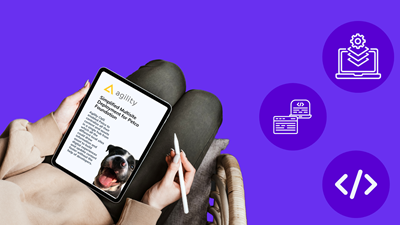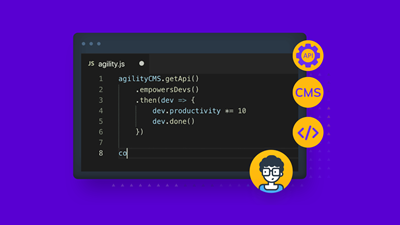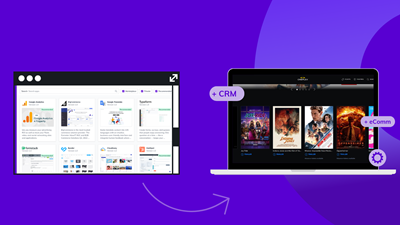Choosing the Perfect Technology Stack


What is a Technology Stack?
Before we delve into the decision-making process, let's clarify what a technology stack is. In simple terms, it refers to a collection of software and programming languages used to develop a web or mobile application. It consists of three main components:
- Frontend: This is the part of the app that users interact with directly. It includes the user interface (UI) elements, design, and client-side code.
- Backend: The backend comprises server-side logic, database management, and application architecture that runs behind the scenes.
- Middleware: Sitting between the frontend and backend, middleware ensures smooth communication and data exchange.
While it can be defined simply, several tech stack challenges must be considered. Don't worry; following the proper guidelines can easily overcome these challenges.
Guidelines for Choosing Technology Stack
As promised, here is a suggested guide on how to choose the most suitable technology stack for your app:
Identify Your Project Requirements
The first step in selecting the right technology stack is understanding your project requirements thoroughly. Ask yourself the following questions:
- What is the primary purpose of your app?
- Who is your target audience?
- What features and functionalities do you need?
- What are your budget and timeline constraints?
Knowing your requirements, you'll be better equipped to choose technologies that align with your app's goals and avoid unnecessary complexities.
Consider Your Team's Expertise
Assessing your development team's skills is crucial in choosing the right technology stack. If your team is already proficient in certain programming languages and frameworks, using technologies they are familiar with may be more efficient. This can save time on the learning curve and lead to a smoother development process.
If your team is well-versed in Python and Django, opting for these technologies might be the best choice. However, don't hesitate to explore new technologies if they offer distinct advantages for your project.
Also, consider assembling a development team with diverse backgrounds, such as one of the most popular computer programming degrees. These degrees often provide a strong foundation in various programming languages and concepts, equipping them to handle different technologies and stacks effectively.
Scalability and Flexibility
While meeting your current project needs is essential, it's equally important to consider future scalability and flexibility. Ensure that the technology stack you choose can adapt to the evolving demands of your app as it grows and attracts more users. This forward-thinking approach will prevent the need for significant rework in the future.
Choosing the Frontend Technology
The frontend is the face of your app, directly impacting user experience. There are several popular frontend trends as well as technologies to choose from, such as:
- HTML/CSS: The backbone of any web application, HTML and CSS define the structure and style of your app's interface. They are essential skills for frontend developers.
- JavaScript: A versatile language that allows you to add interactivity and dynamic features to your app. Consider using a popular JavaScript library or framework, such as React, Angular, or Vue.js, for enhanced functionality.
- Mobile App Frameworks: If you're building a mobile app, you can choose between native development (Swift for iOS and Java/Kotlin for Android) or cross-platform frameworks like React Native or Flutter.
Selecting the Backend Technology
The backend is the engine of your app, responsible for processing data and business logic. Some popular backend technologies include:
- Node.js: A server-side JavaScript runtime that enables you to build fast and scalable network applications.
- Ruby on Rails: A user-friendly framework that promotes rapid development and follows the "convention over configuration" principle.
- Python with Django: A powerful combination for building robust and maintainable web applications.
- Java with Spring: A widely-used and reliable option for enterprise-level applications.
- PHP: A popular choice for web development, especially for small to medium-sized projects.
Database Management
The database is where your app stores and retrieves information. The right database management system (DBMS) is crucial for efficient data management. Consider the following options:
- Relational Databases: Ideal for structured data with fixed schemas, options like MySQL and PostgreSQL are widely used and well-supported.
- NoSQL Databases: Suited for handling unstructured or semi-structured data, MongoDB and Cassandra are popular choices.
- Cloud-Based Databases: Services like Amazon DynamoDB or Google Cloud Firestore offer scalable solutions for cloud-based applications.
Security Considerations
Security is paramount when developing any app. Ensure your technology stack adheres to the best security practices and has a robust community actively addressing vulnerabilities. Regular updates and maintenance are essential to stay ahead of potential threats.
Testing and Debugging
Choosing a technology stack that supports effective testing and debugging processes will save you time and effort during development. Ensure the tools and frameworks you opt for offer comprehensive testing capabilities and debugging support.
When it comes to selecting the ideal technology stack for your app, there are also several valuable tools you can utilize. Of course, conducting thorough research on the latest frameworks, programming languages, and libraries is essential to make informed decisions. Tools such as Agility CMS and various online developer communities offer valuable insights and real-world experiences from other developers, helping you gauge the popularity, stability, and community support for different technologies.
Navigating the Path to Success - Building a Robust App with the Right Technology Stack
Selecting the right technology stack for your app may seem daunting, but with careful consideration of your project requirements, team expertise, scalability, and security, you can make an informed decision. Remember, with the right technology stack in place, you'll be well on your way to building a successful and user-friendly application that meets your goals and satisfies your audience.
Foundations for a Composable Tech Stack with Agility CMS
In the ever-evolving landscape of app development, the concept of a technology stack has grown beyond conventional boundaries. As businesses demand more flexibility, scalability, and efficiency from their applications, the need for composable tech stacks has risen. A composable tech stack allows you to seamlessly integrate and swap components as needed, enabling you to adapt to changing requirements and take advantage of emerging technologies.
This is where Agility CMS provides the foundations for a composable tech stack that empowers developers and businesses to build and deploy applications with agility and efficiency. Agility CMS is a powerful content management system that offers a headless approach to content management. In a headless CMS, the frontend and backend are decoupled, allowing developers to use the frontend technologies of their choice while managing content through a unified backend system.
How Agility CMS Enhances Composability
Agility CMS enhances composability by offering several key features:
-
Flexible Content Modeling: Agility CMS enables you to define content models that suit your application's unique needs. This flexibility is crucial for adapting to changes and adding new features without significant code changes.
-
API-First Approach: Agility CMS provides robust APIs that allow you to fetch content and deliver it to various platforms and devices. This API-first approach ensures that your content is accessible and can be easily integrated into different frontend technologies.
-
Integration Capabilities: Agility CMS offers integrations with popular frontend frameworks and technologies like React, Angular, and Vue.js. This compatibility allows developers to work with the tools they are already comfortable with, fostering productivity and creativity.
-
Microservices Architecture: Agility CMS is designed with a microservices architecture in mind, aligning perfectly with the composable tech stack concept. You can choose the best tools and services for each aspect of your application, creating a customized solution that fits your exact needs.
-
Scalability and Performance: With Agility CMS handling content management and delivery, developers can optimize the frontend and backend components for performance and scalability. This separation of concerns enables efficient resource utilization and improved user experiences.
-
Continuous Innovation: As the digital landscape evolves, Agility CMS keeps pace by introducing new features and updates. This commitment to innovation ensures that your composable tech stack remains relevant and capable of meeting future challenges.
Embracing a Composable Future
Agility CMS provides the tools and infrastructure needed to embrace a composable future, where applications can be assembled and reassembled like building blocks. By leveraging Agility CMS as part of your technology stack, you're laying the groundwork for a versatile, future-proof solution that can evolve alongside your business.
In conclusion, a composable tech stack powered by Agility CMS empowers developers to create modular, adaptable, and efficient applications. As the demands of users and the industry continue to evolve, having a foundation that supports flexibility and innovation is essential for long-term success. With Agility CMS as a cornerstone of your tech stack, you're well-equipped to navigate the challenges and opportunities that lie ahead in the realm of app development.

About the Author
Agility CMS is Canada's original headless CMS platform. Since 2002, Agility has helped companies across Canada and around the world better manage their content. Marketers are free to create the content they want, when they want it. Developers are empowered to build what they want, how they want.
- Get a demo for a personalized walkthrough.
- Try for FREE and experience Agility CMS.
- Contact us with your questions.



